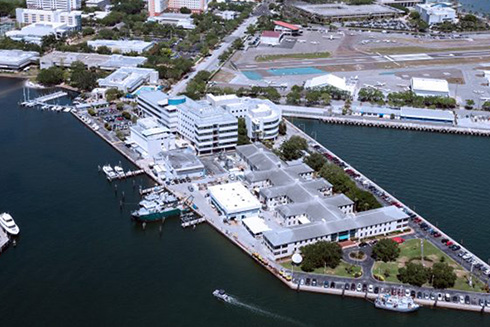News
2022 Article Listing
Viewing items with Category: All Categories, Year: All Years

CMS in the News 2022
The USF College of Marine Science news team is dedicated to sharing USF CMS's story to a global audience. View CMS in the news for 2022.
December 23, 2022CMS in the News

Rising Tides December 2022
View some of the highlights in the Rising Tides Newsletter, December 2022 edition.
December 12, 2022Rising Tides Newsletter

Advances in the science of turbulence
Unraveling the physics of large-scale planetary features takes patience and time.
December 8, 2022Blogs and Perspectives

Fjords: small-but-mighty planetary “thermostats” whose role in the global carbon cycle is both sink and source
If you’re worried about escalating human-induced climate change, consider adding fjords to your thank-you list during this season of gratitude.
December 7, 2022News

Hurricane season underscores the value of improved flood forecasting
In late May, forecasters at NOAA’s Climate Prediction Center signaled a tempestuous 2022 Atlantic hurricane season.
December 2, 2022Florida Flood Hub, News

Distinguishing the influence of sediments, the Congo River, and water-mass mixing on the distribution of iron and its isotopes in the Southeast Atlantic Ocean
Iron is a key micronutrient for primary production in the surface ocean. Iron isotopes can provide a window into the sources and cycling of iron to the surface and deep ocean.
November 30, 2022News, Publication Highlights

How the College of Marine Science responded to Hurricane Ian
In the wake of the hurricane, researchers at the University of South Florida College of Marine Science (CMS) have been hard at work studying the storm’s impacts on the state. From high-resolution modeling to satellite imagery, these snapshots show our teams at work.
November 30, 2022Florida Flood Hub, News

Solving the mysteries of nickel: an oceanic paradox
As with terrestrial life, all oceanic life needs nutrients such as nitrate, phosphate, carbon, and various trace metals to survive. In the vast open gyres of the ocean, such nutrients are increasingly hard to come by.
November 15, 2022Blogs and Perspectives

USF-led team detects toxic “forever chemicals,” or PFAS, in Tampa Bay fish and sediments
The first-of-its-kind study also outlines potential human health implications related to fish consumption.
November 15, 2022News

A Tribute to William T. “Bill” Hogarth, Ph.D. (1939-2022)
William T. (“Bill”) Hogarth, 83, of Treasure Island FL passed away after a short illness on November 5, 2022.
November 9, 2022News

USF Team Selected by NOAA for Award to Support Marine Sanctuaries
The three-year project, “Climate Change Indicators Across the National Marine Sanctuaries System,” is one of seven competitively selected projects addressing marine sanctuary management totaling $3.7 million.
October 26, 2022News, Resiliency News

Join Me on an Oceanographic Cruise
Throughout our cruise, many different techniques were used by the scientists on board to collect and measure samples for biological and/or chemical studies.
October 25, 2022Blogs and Perspectives